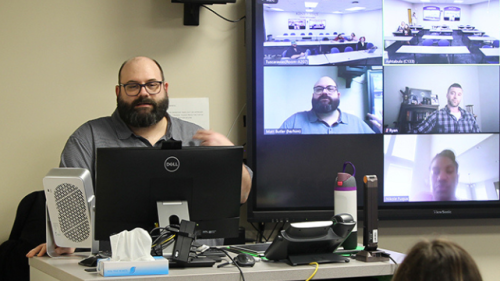Magnetic resonance imaging (MRI) uses a large magnet and radio waves to look at organs and structures inside someone’s body. Health care professionals use MRI scans to diagnose a variety of conditions, from torn ligaments to tumors.1
Magnetic resonance imaging (MRI) scans are ordered on orthopedic, neurological, cardiovascular, cancer, and non-trauma patients and are extremely beneficial for examining soft tissue structures.
An MRI technologist works in hospitals or outpatient healthcare facilities using an MRI scanner that uses a magnetic field and computer-generated radio waves to create detailed images of the organs and tissues in the body. The images are assembled and reconstructed digitally to create a series of diagnostic images that physicians use to interpret for a patient diagnosis.
Why should I get a degree in Magnetic Resonance Imaging?
The U.S. Bureau of Labor Statistics projects the overall employment of MRI technologists to grow by 7% from 2019 to 2029, faster than the average for all occupations.2 As the population grows older, there will be an increase in medical conditions that require imaging as a diagnostic tool.
MRI technologists operate magnetic resonance imaging (MRI) scanners to create diagnostic images. Magnetic resonance imaging technologists had a median annual wage of $74,690 in May 2020.3
NEW PROGRAM! Enroll today in the Online Magnetic Resonance Imaging Undergraduate Certificate at Kent State University
The Online Magnetic Resonance Imaging Undergraduate Certificate program provides coursework in anatomy, patient management, procedures, and image production. Students observe magnetic resonance imaging procedures, perform procedures under direct supervision by registered technologists, and complete required clinical competencies toward the national certification exam for magnetic resonance imaging or to be applied toward continuing education requirements as deemed by the American Registry of Radiologic Technologists (ARRT).
The Magnetic Resonance Imaging certificate offers a seamless transfer pathway into the Online Bachelor of Radiologic Imaging Sciences Technology (B.R.I.T.) degree. Students are able to complete the certificate, sit for the national certification exam, begin working in the profession and then enroll in the B.R.I.T. degree and complete the remaining requirements to earn the bachelor’s degree. The BRIT degree requires a grade of “C” (2.0) or better in the required RIS courses and a minimum of 2.75 cumulative GPA in the major.
Graduates of this program will be able to:
- Apply knowledge to the practice of magnetic resonance imaging.
- Effectively utilize critical thinking, problem-solving, and decision-making skills in the practice of magnetic resonance imaging.
- Effectively communicate in oral and written form with patients, customers, and all members of the health care team.
- Successfully perform magnetic resonance imaging procedures and attain results of high diagnostic value while providing patient care.
- Exhibit personal and professional attributes and values relevant to the practice of magnetic resonance imaging.
This program is designed to be completed in as little as 2 semesters!
For more information on Kent State’s Online Magnetic Resonance Imaging Undergraduate Certificate, visit https://onlinedegrees.kent.edu/degrees/certificate-magnetic-resonance-imaging.
Sources:
1 Retrieved on June 22, 2021, from https://medlineplus.gov/mriscans.html
2 Retrieved on June 22, 2021, from https://www.bls.gov/ooh/healthcare/radiologic-technologists.htm
3 Retrieved on June 22, 2021, from https://www.bls.gov/ooh/healthcare/radiologic-technologists.htm





